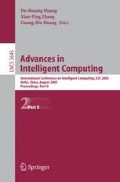Abstract
Multi-agent systems (MAS) are studied from the point of view of software architecture. As the existing architecture description languages (ADLs) are difficult to describe the semantics of MAS, a novel architecture description language for MAS (π-net ADL) rooted in BDI model is proposed, which adopts π-calculus and Object-Oriented Petri nets presented in this paper as a formal basis. π-net ADL stresses the description of dynamic MAS architecture, and it is brought directly into the design phase and served as the high-level design for MAS implementation. π-net ADL can visually and intuitively depict a formal framework from the agent level and society level, and analyze, simulate and validate MAS and interactions among agents. Finally, to illustrate the favorable representation and analysis capability of π-net ADL, an example of multi-agent systems in electronic commerce is provided.
Access this chapter
Tax calculation will be finalised at checkout
Purchases are for personal use only
Preview
Unable to display preview. Download preview PDF.
References
Wooldridge, M.J., Jennings, N.R.: Agent Theories, Architectures, and Languages: a Survey, vol. 890, pp. 1–32. Springer, Heidelberg (1995)
Wooldridge, M.J., Jennings, N.R.: Intelligent Agents: Theory and Practice. Knowledge Engineering Review 10, 115–152 (1995)
Jiao, W., Zhou, M., Wang, Q.: Formal Framework for Adaptive Multi-Agent Systems. In: Proceedings of the IEEE/WIC International Conference on Intelligent Agent Technology, Beijing, pp. 442–446 (2003)
Brazier, F.M.T., Dunin-Keplicz, B.M., Jennings, N.R., Treur, J.: Desire: Modelling Multi-Agent Systems in a Compositional Formal Framework. International Journal of Cooperative Information Systems 1, 67–94 (1997)
Xu, H., Shatz, S.M.: A Framework for Model-Based Design of Agent-Oriented Software. IEEE Transactions on Software Engineering 29, 15–30 (2003)
Luck, M., d’Inverno, M.: A Formal Framework for Agency and Autonomy. In: Proceedings of the First International Conference on Multi-Agent Systems, San Francisco, pp. 254–260 (1995)
Fisher, M., Wooldridge, M.: On the Formal Specification and Verification of Multi-Agent Systems. International Journal of Cooperative Information Systems 1, 37–65 (1997)
Zhu, H.: Slabs: A Formal Specification Language for Agent-Based Systems. International Journal Software Engineering and Knowledge Engineering 11, 529–558 (2001)
Wooldridge, M., Jennings, N.R., Kinny, D.: The Gaia Methodology for Agent- Oriented Analysis and Design. International Journal of Autonomous Agents and Multi-Agent Systems 3, 285–312 (2000)
DeLoach, S.A.: Multiagent Systems Engineering. In: Proceedings of Agent Oriented Information Systems, Stockholm, pp. 45–57 (2000)
Odell, J., Parunak, H.V.D., Bauer, B.: Representing Agent Interaction Protocols in UML. In: Proceedings of the First International Workshop on Agent Oriented Software Engineering, Limerick, pp. 121–140 (2001)
Medvidovic, N., Taylor, R.N.: A Classification and Comparison Framework for Software Architecture Description Languages. IEEE Transactions on Software Engineering 26, 70–93 (2000)
Murata, T.: Petri Nets: Properties, Analysis, and Application. Proceedings of the IEEE 77, 541–580 (1989)
Saldhana, J.A., Shatz, S.M.: Formalization of Object Behavior and Interactions from UML Models. International Journal of Software Engineering and Knowledge Engineering 11, 643–673 (2001)
Kavi, K.M., Aborizka, M., Kung, D.: A Framework for Designing, Modeling and Analyzing Aagent Based Software Systems. In: Proceedings of the Fifth International Conference on Algorithms and Architectures for Parallel Processing, Beijing, pp. 196–200 (2002)
Sangiorgi, D., Walker, D.: The Pi-Calculus: a Theory of Mobile Processes. Cambridge University Press, Cambridge (2001)
Jiao, W., Shi, Z.: A Dynamic Architecture for Multi-Agent Systems. In: Proceedings of Technology of Object-Oriented Languages and Systems, Nanjing, pp. 253–260 (1999)
Author information
Authors and Affiliations
Editor information
Editors and Affiliations
Rights and permissions
Copyright information
© 2005 Springer-Verlag Berlin Heidelberg
About this paper
Cite this paper
Yu, Z., Cai, Y., Wang, R., Han, J. (2005). π-Net ADL: An Architecture Description Language for Multi-agent Systems. In: Huang, DS., Zhang, XP., Huang, GB. (eds) Advances in Intelligent Computing. ICIC 2005. Lecture Notes in Computer Science, vol 3645. Springer, Berlin, Heidelberg. https://doi.org/10.1007/11538356_23
Download citation
DOI: https://doi.org/10.1007/11538356_23
Publisher Name: Springer, Berlin, Heidelberg
Print ISBN: 978-3-540-28227-3
Online ISBN: 978-3-540-31907-8
eBook Packages: Computer ScienceComputer Science (R0)

